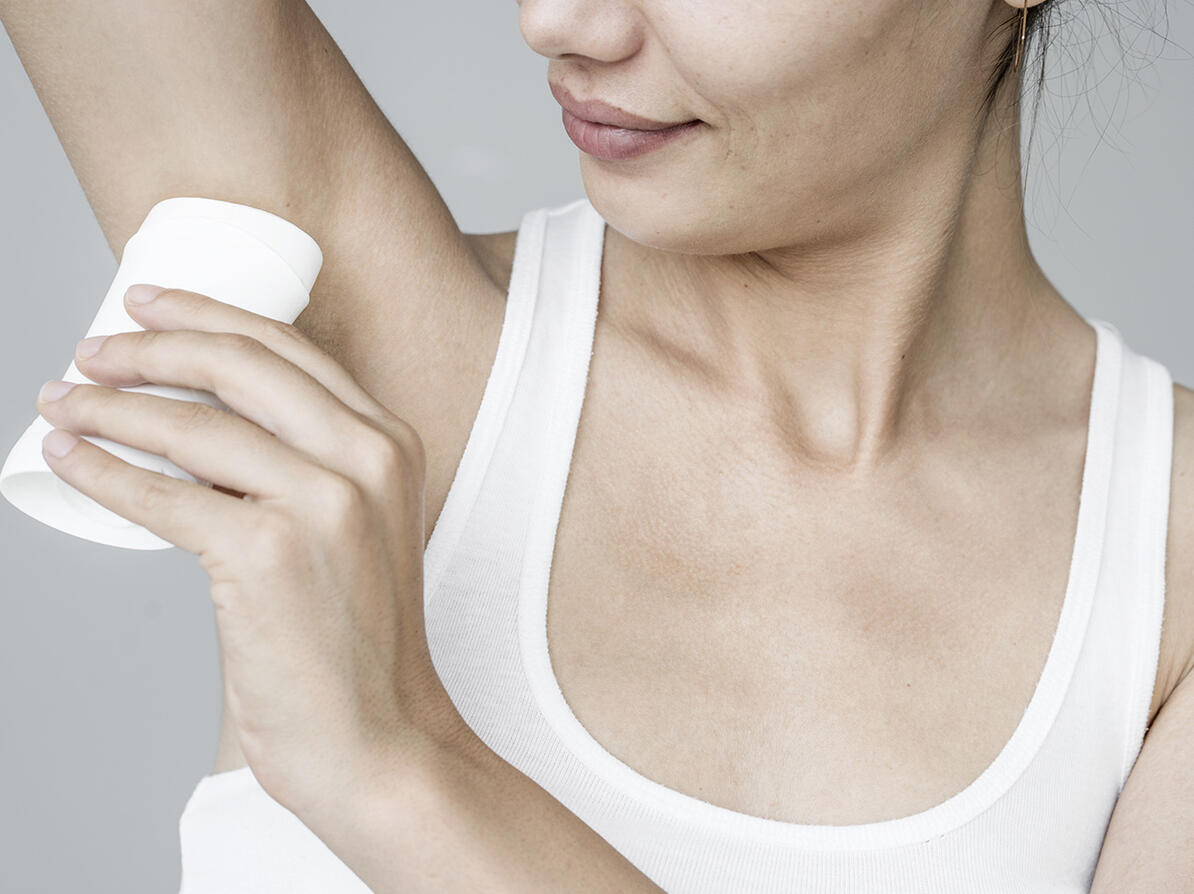These deodorants contain unwanted chemicals
The ingredients in your deodorant stay on your skin for a long time until you wash them off again. See which substances you should avoid from our test.

Deodorant is one of the personal care products that we use daily, and we have prolonged skin contact with its ingredients.
Some ingredients can cause allergies or are suspected endocrine disrupters.
We recommend you look for deodorants without unwanted chemicals.
One in four deodorant contains unwanted chemicals
In the test, almost every fourth deodorant contains substances that scientists and authorities suspect to be endocrine disrupters or allergenic.
This applies to a total of 13 out of the 57 deodorants. Suspected endocrine disrupters can affect the body's hormone balance, including sex hormones or metabolic hormones that control processes in the body.
These substances can contribute to obesity, reduced sperm quality, and certain hormone-sensitive forms of cancer.
Avoid triclosan in personal care products
The deodorant from Forever Living Aloe ever-shield deodorant stick contains the substance triclosan.
Triclosan can be used in deodorants as a bactericidal agent, but at the same time, it is suspected of making bacteria resistant to antibiotics, thereby increasing the risk that antibiotic treatment will no longer be effective.
Triclosan is also a suspected endocrine disrupter and problematic for the environment.
The Danish Environmental Protection Agency recommends avoiding products with triclosan.
We see fewer and fewer cosmetic products with triclosan, but if a deodorant advertises itself as bactericidal, it may contain the substance.
The individual deodorant is not problematic
Your health is not affected because you use a single product with a suspected endocrine disrupter.
However, suspected endocrine disrupters can have an impact when you are exposed to them from many different sources in your daily life.
Scientists talk about the combination effects or cocktail effects of the many chemical substances you are in contact with.
Therefore, it can be a good idea to avoid these substances where you can.
Deodorants with fragrance are a common cause of perfume allergy
In the test, 20 out of the 57 deodorants contain perfume, and therefore they receive the medium rating, B.
Fragrance in deodorants is one of the most common causes of perfume allergies. Once you have perfume allergy, it lasts a lifetime.
Therefore, a fragrance-free deodorant is the best choice if you want to reduce the risk of getting perfume allergies.
Choose a deodorant with an A-rating
In the test, there are many good choices of deodorants without unwanted chemicals.
A total of 24 deodorants in the test are free from chemicals that are potentially problematic for health and the environment.
Most of them also have the Nordic Swan Ecolabel and/or allergy labels such as Asthma Allergy Nordic or Allergy Certified.
How to avoid unwanted chemicals in deodorants
- Choose a roll-on deodorant, stick, or cream. It is a better choice than spray deodorants, which form small particles in the air that you can breathe in.
- Look for deodorants that are "fragrance-free" or "perfume-free". Fragrance in deodorants is a common cause of allergies.
- Choose a deodorant with the Nordic Swan Ecolabel, preferably in combination with an allergy label such as Asthma Allergy Nordic or AllergyCertified.
- Do not use deodorant immediately after shaving. The skin is extra sensitive after shaving.
About the test
-
The test is a declaration test. This means that a review of the declared content was carried out to see if the deodorants contain substances that could be problematic.
For example, whether the ingredients are suspected endocrine disrupters or capable of causing allergies.
The deodorants in the test were selected and represent the market broadly. For example, considerations were made to ensure that the test covers different brands, prices, and versions for women and men.
The ingredient lists have been sent to the responsible companies for verification and to ensure that they are current products on the market.
-
- Cyclopentasiloxane is suspected endocrine disrupters and problematic for the environment. Found in a single product.
- Benzyl salicylate is suspected endocrine disrupters and can also cause allergies. Found in 7 products.
- Bht is a suspected endocrine disrupter. The substance is found in 5 products.
- Triclosan is a suspected endocrine disrupter and problematic in the environment. Found in a single product.
- Diazolidinyl urea is allergenic. Found in a single product.
- Iodopropynyl butylcarbamate is allergenic and can be problematic in the environment. Found in 4 products.
- Methylparaben is a suspected endocrine disrupter. Found in a single product.
A total of 57 deodorants are included in the test:
- 24 deodorants receive the rating A and are free of a range of problematic substances.
- 20 deodorants receive a medium rating - B. They contain, for example, fragrance.
- 13 deodorants receive the lowest rating - C. They contain, for example, suspected endocrine disrupters or allergenic preservatives.